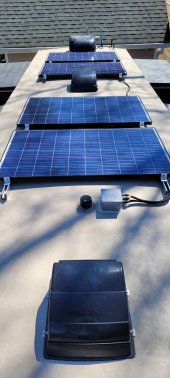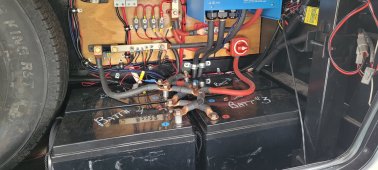The battery terminals something could easily fall across. I would put a cover over that, as is normal for newer cars and their starting battery.
Cars normally have fuses for branch circuits and fusible link between battery and fuse holder, but no fuse on the very high current starter circuit.
The house battery in the picture appears to be at least 24V if not 48V, and if lithium can dump many times the wattage of a car battery. Current might approach 20,000A if a 48V string of batteries, or 40,000A if 2s2p. Considerably more than what a starter battery would deliver. A class T fuse before the first point where a short is likely to occur could be good insurance. An end user might pay 0.1% or less than the value of the motorhome for such protection, even though manufacturer would avoid it.
Industry is also using "explody" lithium chemistry for Power Wall type products, and some brands have had recalls due to fires. Many DIY consumers here are using the safer LiFePO4. We can pay more to do it right, rather than trying to shave "mils" (1/10ths of a cent) like the auto industry does.






